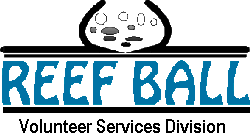

|
Sometimes, it is know that corals will die because of foreseen construction, or other anticipatable changes. It these cases, the foremost tactic to rescue the corals is to do all things possible to avoid the construction or other identifiable change. If, for example, a reef will be destroyed by sedimentation of the sand plump of beach filling, point out that there are other viable solutions to restoring beaches without sand pumping. The first responsibility is to avoid harming our natural reef systems. As a last effort, and not as a way of making it "okay" ...it is possible to move many corals or at least to preserve the coral genetics by propagating fragments of each adult coral colony in the threatened area and replanting them in a suitable and safe location. |
|
Quick
Artificial Reef
Monitoring and Activities Near You (Reef Ball World Mapping System) |
Steps in A Coral Rescue Project
|
Want Information About Volunteering & Current
Projects?
Just enter your email address and hit submit
|
Need more information? Contact us:
|
||
|
|

Reef Ball Foundation, Inc., Georgia Office (Kathy Kirbo) Florida Office (Todd Barber)
|
|
|
Copyright ©1993 - 2004, Reef Ball Foundation, Inc. all rights reserved. See brochure page footer for information on patents, copyrights, trademarks and service marks referenced, but not indicated, on this page. |
Other Valuable Internal Reef Ball Links
Reef
Ball World Mapping System-NEW
-Project Summaries, News, Coordinates, Coordinators, Contractors, ETC by
Location!
News
Articles in the Press
-Maiden
Island Antigua Total Reef Restoration Project Press Release.
-Coral
Reef Transplant Notes
-Identified
Hard Coral Diseases (The
Coral Disease Page) offline